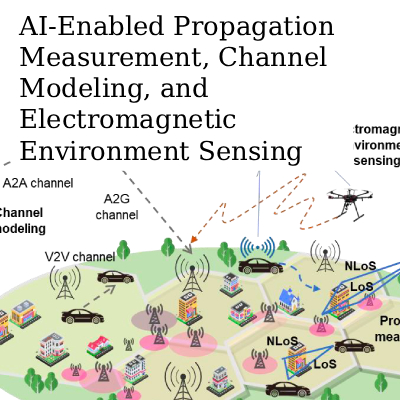Download Call for Papers (PDF)
Submission Deadline: 30 September 2021
 Aims & Scope: Reconfigurable and smart EM devices have a fundamental role in modern telecommunication systems supporting multiple standards and possibly multiple functionalities beyond their standard "information transfer" task, including sensing, powering, and identification. In such a scenario, the possibility to embody intelligence in telecommunication systems at the material level (that is, enabling the material to autonomously react and adapt) is emerging as an opportunity to revolutionize the foundation of telecommunications and EM engineering. Several applicative contexts of this paradigm are already being explored, from distributed "ambient intelligence" for improving communication performance in 6G systems and beyond to enhanced biomedical wearable devices. However, several fundamental questions still need to be addressed to make the concept viable, on the one hand, in terms of the artificial intelligence algorithms and techniques that can be actually made compatible with the available technology, and, on the other hand, on the methodologies and techniques to exploit such additional degrees-of-freedom within the telecommunication system design process (e.g., in terms of propagation models, field manipulation capabilities, and scattering properties). Such aspects actually entail a cross-layer view of the telecommunication system (i.e., from the physical to the system level in an integrated manner) that goes beyond the technological realization of the reconfigurable device and it includes (i) how such a material can be used (what are the objectives that the material must pursue at the system level through its re- configuration at the physical level), and (ii) how the features of the 2D/3D reconfigurable materials affect their modeling, propagation properties, and integration at the system level.
Aims & Scope: Reconfigurable and smart EM devices have a fundamental role in modern telecommunication systems supporting multiple standards and possibly multiple functionalities beyond their standard "information transfer" task, including sensing, powering, and identification. In such a scenario, the possibility to embody intelligence in telecommunication systems at the material level (that is, enabling the material to autonomously react and adapt) is emerging as an opportunity to revolutionize the foundation of telecommunications and EM engineering. Several applicative contexts of this paradigm are already being explored, from distributed "ambient intelligence" for improving communication performance in 6G systems and beyond to enhanced biomedical wearable devices. However, several fundamental questions still need to be addressed to make the concept viable, on the one hand, in terms of the artificial intelligence algorithms and techniques that can be actually made compatible with the available technology, and, on the other hand, on the methodologies and techniques to exploit such additional degrees-of-freedom within the telecommunication system design process (e.g., in terms of propagation models, field manipulation capabilities, and scattering properties). Such aspects actually entail a cross-layer view of the telecommunication system (i.e., from the physical to the system level in an integrated manner) that goes beyond the technological realization of the reconfigurable device and it includes (i) how such a material can be used (what are the objectives that the material must pursue at the system level through its re- configuration at the physical level), and (ii) how the features of the 2D/3D reconfigurable materials affect their modeling, propagation properties, and integration at the system level.
The objective of this Special Section is to provide a broad survey on the recent breakthrough research on the above mentioned fields, with a specific emphasis on the following (non-exhaustive) sub-topics:
- Propagation aspects of 2D/3D intelligent materials and integration within EM system design
- System-level management of smart materials and quality-oriented synthesis for telecommunications
- Digital coding and programmable metamaterials and metasurfaces
- Information metamaterials and metasurfaces
- Cross-layer configuration technologies and techniques for planar and volumetric intelligent materials
- Embodied control algorithms and artificial intelligence within cognitive materials (i.e., material-level reconfiguration control techniques, implementation strategies, and control goals)
- Antennas and EM devices application of intelligent metamaterials and metasurfaces
- Sensing and biomedical applications of intelligent surfaces and volumetric materials
Keywords:
- 2D/3D Metamaterial Intelligence
- Digital Coding and Programmable Metamaterials
- Information Metamaterials
- Propagation and Modeling of Reconfigurable Materials
- Embodied Control Algorithms; Applications of Smart RF Materials in Communications, Sensing, and Biomedicine
Lead Guest Editor
Giacomo Oliveri
University of Trento, Italy
Guest Editors
Marco Di Renzo
CNRS & Paris-Saclay University, France
Tie Jun Cui
Southeast University, China














